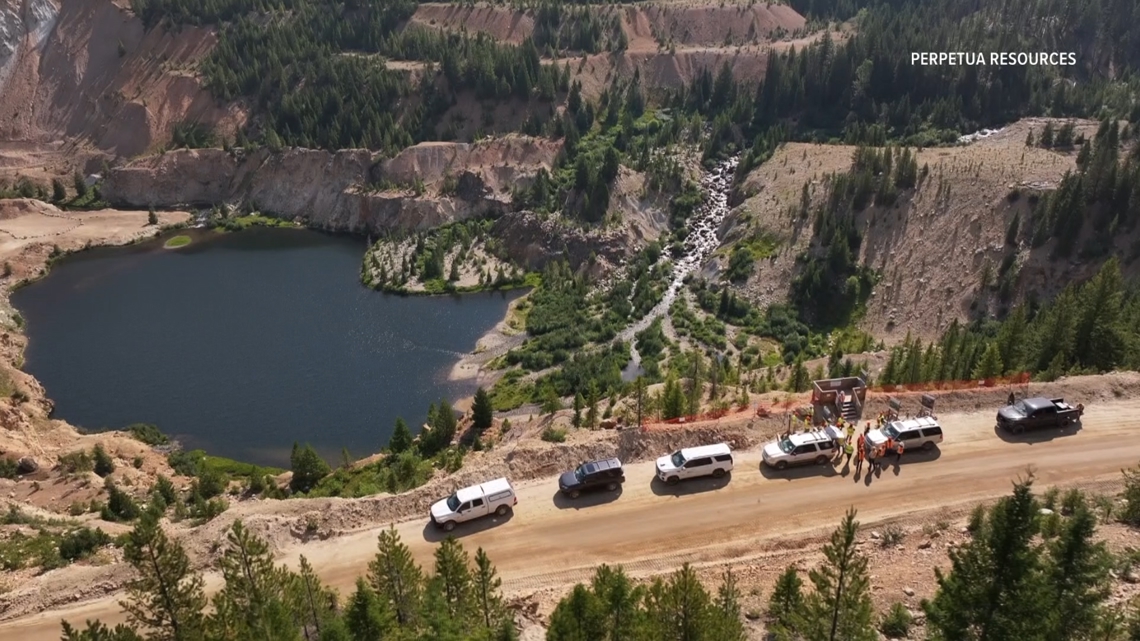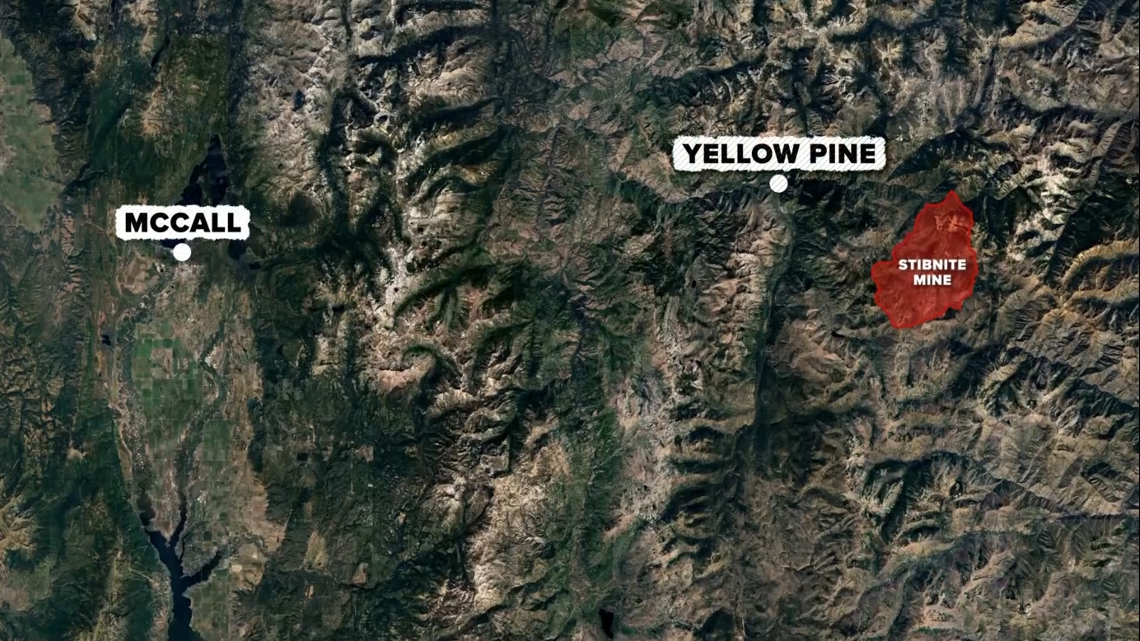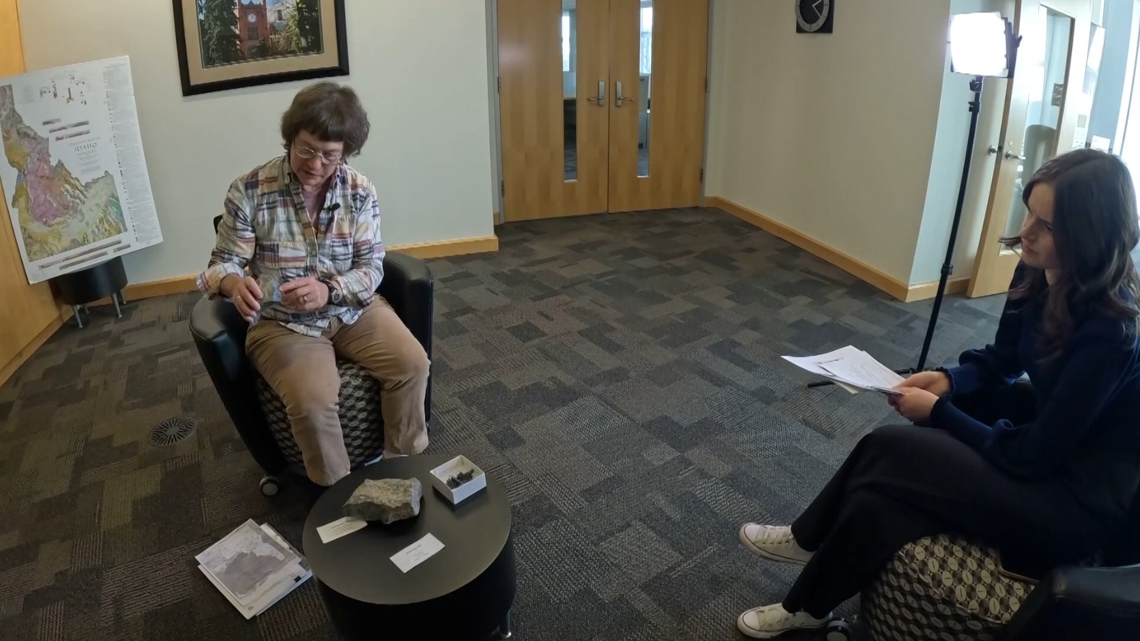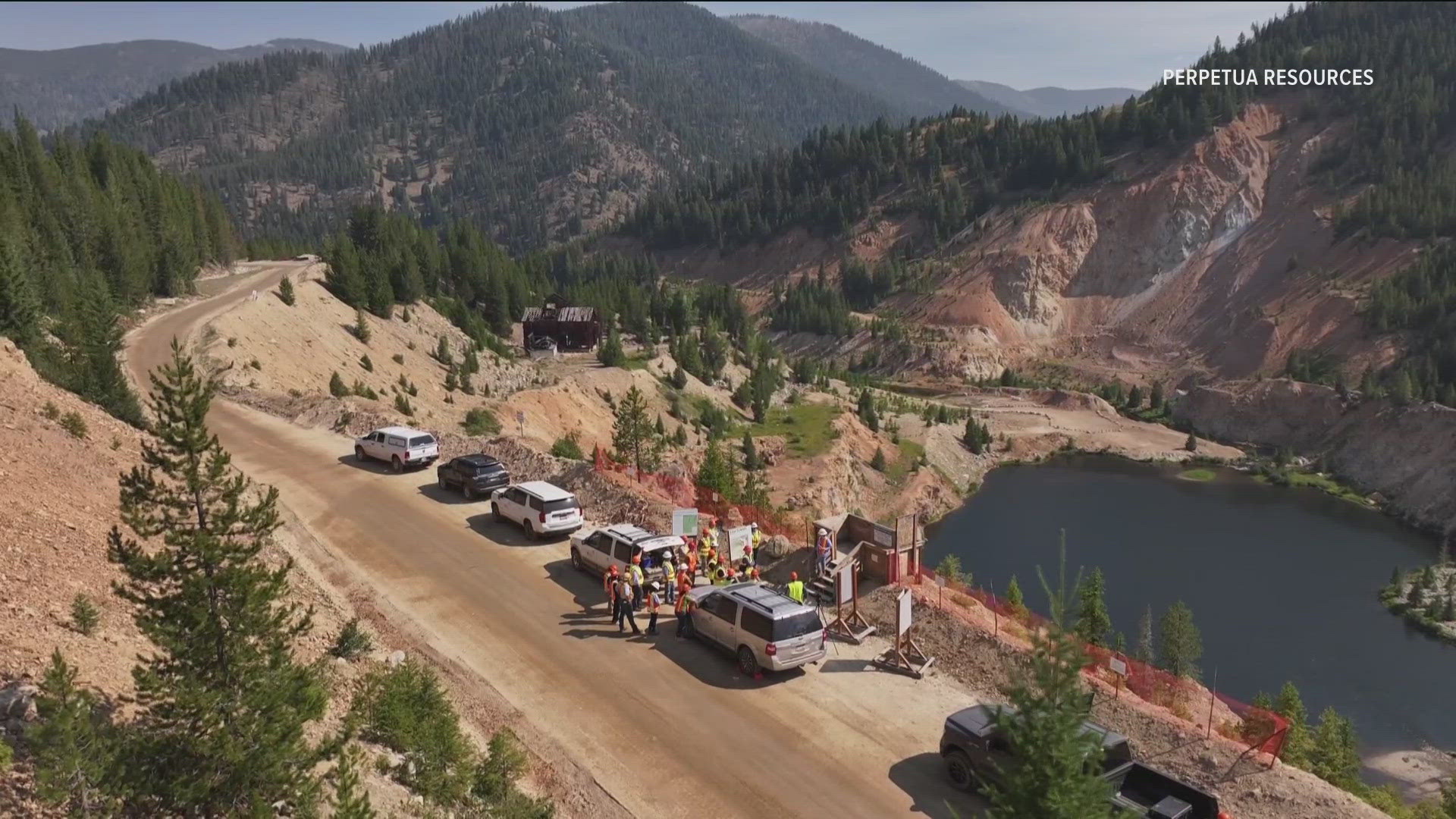MCCALL, Idaho — A historic mining district in central Idaho could soon become home to one of the largest active gold mines in the United States.


The U.S. Forest Service is expected to make a final decision about the project in the coming months.
"The economic impact will be about over a billion dollars for Valley County," Perpetua Resources CEO Jon Cherry said, "which desperately needs that type of an impact or that support. So, we're very excited."
The Boise-based company has its sights set on revitalizing central Idaho's historic Stibnite Mining District near McCall and Yellow Pine.


Cherry said they want to develop an open pit mining operation not only for gold but for silver and another rare element antimony.
"The military uses it in a lot of munition products," he said. "But much broader use includes flame retardants, night vision goggles, semiconductors.”
Stibnite is the only site in the U.S. with military-grade antimony readily available, which essentially means high quality.
Geologist Virginia Gillerman said she is not surprised Perpetua wants to remine the area considering the rare elements found in the district.
She is a part of the Idaho Geological Survey, which publishes research on the Stibnite Mining District.


"Stibnite, as proposed as a potential new mine, is a gold project, no doubt about that," she said, "but the antimony is of particular interest to the U-S Defense Department."
Perpetua started the permitting process in 2016. Cherry said mining for gold would be the economic driver to allow them to mine the antimony.
Perpetua said the DOD has already put roughly $75 million into the project.
A U.S. Army spokesperson said in an email, "Developing domestic sources for antimony would strengthen our supply chain resilience, which is essential for national security.”
There are deposits worldwide, but many are not in "friendly" counties. That includes China, which implemented a national ban on antimony exports, Cherry said.
"The world market for antimony is really getting tightened up because of controls being put in place by China," he said. “We want to rely on our own resources.”


Historically, the U.S. has done just that.
"This project has been around in different forms for many years," he said. "The U-S military and their contractors came in and mined this site for antimony and tungsten, and it supplied about 90% of those critical minerals and metals for the war effort during both World War Two and the Korean War."
However, Gillerman said there were no environmental protections put in place at that time. The effects are still visible at the Stibnite Mining District today.
She said responsible mining is the path forward.
“Minerals are where you find them," Gillerman said. "And so, you can't just say, oh, we're not [going to] mine it here. It's just a not in my backyard thing. And too often, you know, it may be a trade-off with a specific plant or a waterway. But if things are done right, there's often a compromise."
Cherry said Perpetua is dedicated to cleaning up the area and mitigating impacts.
"I don't think people actually take the time and think a lot about everything that we touch and use every single day has to come out of the ground from somewhere," he said. "So, it's important to do it right."
Environmental concerns
Several groups, such as the Nez Perce Tribe and Idaho Conservation League, are not convinced that Perpetua will do it right.
“At the scale of what they’re doing, we have no choice but to oppose the project in its entirety," said Emmit Taylor Jr, the tribe's fisheries watershed deputy director.
KTVB dove into their concerns in a story slated to air on the News at 10 on Friday.

